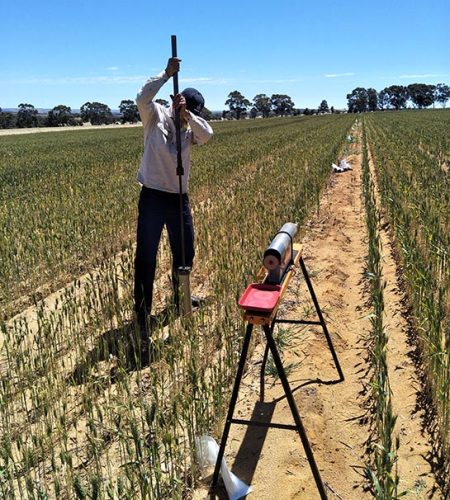This fact sheet supports the ‘Improving the performance of sandy soils’ webinar by Soil CRC Researcher Dr Amanda Schapel, Primary Industries and Regions South Australia (PIRSA).
In the webinar, Dr Schapel examines findings from a meta-analysis and literature review from the Soil CRC’s ‘New amendments for sandy soils’ project. The project proposes that step changes towards high performance sandy soils will come from permanently raising their reactive surface area, with added clay or recalcitrant organic matter or both.
Enhancing Productivity Of Sandy Soils In Agriculture
Sandy soils cover approximately 16 million hectares in southern Australia and pose challenges due to low nutrient and water-holding capacities, as well as other limitations such as water repellence and compaction. The aim is to address these limitations and enhance soil productivity by introducing products like clays or organic matter to increase reactive surface area.

Key Factors Influencing Sandy Soil Productivity
The meta-analysis explored the impact of long-term or organic amendments on sandy soil productivity and carbon concentration. It identified key variables such as biomass yield, carbon concentration, and cation exchange capacity as critical factors influencing productivity, and sought to understand the complex interactions across different regions and states in southern Australia.
Impact Of Clay And Organic Amendments On Sandy Soil Productivity And Carbon
The analysis revealed several key factors influencing sandy soil productivity and carbon, such as clay concentration, long-term amendment rate, incorporation depth of organic amendments, depth of sand over clay, and climatic variables such as rainfall and aridity index.
It found that:
- clay addition can overcome water repellence
- higher organic carbon concentration is associated with increased water holding capacity
- iron content, influenced by natural soil properties or amendments, may enhance reactive surface area and limit organic carbon decomposition
- rainfall positively correlates with organic carbon concentration, especially in the top 30 centimetres of soil, indicating higher stability in carbon levels in areas with greater rainfall.
The addition of organic amendments can maintain productivity at depths where clay application alone may not enhance productivity, indicating a potential synergy between organic and clay amendments. Furthermore, adding clay at greater depths can help maintain carbon concentration by protecting organic matter from decomposition by microbes.
A strategic combination of clay and organic amendments, with careful consideration of factors like rainfall, clay content, and incorporation method and rates, can optimise both productivity and carbon sequestration in sandy soils. Pot and field trials further validated the effectiveness of various amendments and combinations, highlighting the importance of strategic amendments tailored to soil properties and incorporation methods, and offering valuable guidance for sustainable soil management practices.

